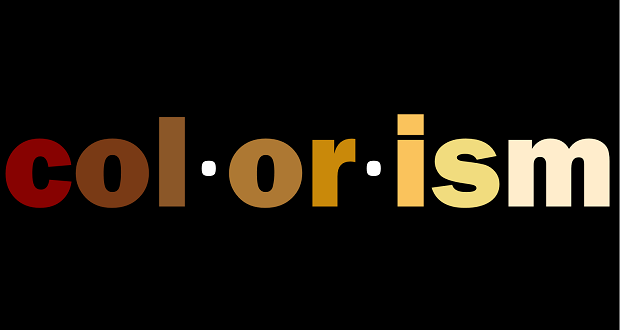
In recent weeks, my colleagues have explored the challenge of building impactful DEI strategy—introducing The Winters Group’s approach to strategy, touching on the value of qualitative and quantitative data, and leveraging the value of adult learning theory to create change. Today, I continue our series on Justice and Anti-Racism in DEI strategy by highlighting the importance of strategic, sustainable intent, and a few elements of this work that are particularly essential.
Confirming “intent“ is crucial because people and organizations do not always make their intentions clear to others. Without clear intentions, it is often impossible for a strategy to achieve a measurable impact. For example, “help,” “equity,” and “allyship” may mean different things for different people. “Sustainable“ is important because the actions taken to support the recent protests should have a lasting and growing impact. And “strategic” is key because these actions should be carefully designed or planned to serve a particular purpose.
Without clear intentions, it is often impossible for a strategy to achieve a measurable impact. Share on XThe sections below highlight aspects of our journey to establish strategic, sustainable intent.
Let employee express their emotions and reactions to the protests.
I recently began a leadership meeting with a client by asking participants to reflect on the following quotation: “Never doubt that a small group of thoughtful, committed citizens can change the world. Indeed, it’s the only thing that ever has.” – Margaret Mead
I invited the participants to share their thoughts and feelings about this idea, particularly in light of recent protests for racial justice. I followed the reflections of the company’s CEO, who discussed the need to act tangibly to eradicate racism—not merely to talk—and to get comfortable with being uncomfortable. He stressed that learning, listening, and reflecting would be vital to responding appropriately in the moment.
Learning, listening, and reflecting is the pre-work to acknowledging and acting with others to eradicate systemic racism. Share on XTo complement his remarks, I wanted to stress that the company must act with sustainable, strategic intent—that learning, listening, and reflecting was the pre-work to acknowledging and acting with others to eradicate systemic racism. And while I would make these points later, in the moment, I found myself crying as I shared:
“As African Americans, we have been waiting so long and working so hard to be acknowledged as whole people, not 3/5th of a person. And we are hoping this is the pivotal moment that systemic racism will finally be addressed after more than 400 years. The hope, anxiousness, and fear of failure in this moment is nearly unbearable.”
While I had not planned to cry to kick off this leadership meeting, it was, in retrospect, necessary, and it set the tone for the remainder of the session.
Another person at the meeting responded:
“Kevin, just now, witnessing your reaction, and the emotion behind your reaction, I realized I did not truly get what was going on, the true significance and magnitude. I have a lot more to learn. I have a lot more growing to do.”
A day later, someone else sent me a note:
“I thought a lot about you. Your speaking was very powerful and touched me. I love you as a co-worker. I love you as a friend; I love you as a human. I appreciated you for speaking your thoughts on the call and what this time means to you. Though you turned your camera off, I could see your tears. I could sense your emotions. By opening my mind, heart, and, most importantly, my ears, I moved from sympathy to empathy. I wanted to thank you for who you have been and who you will continue to be. Your life matters. Thank you for listening.”
The Margaret Meade quote impacted everyone a little differently, and everyone’s contributions led us to commit to clarifying what “We stand with [African Americans]” truly means—on an individual and organizational basis—to eradicate organizational and societal racism.
Takeaway for reflection: Are you providing a vehicle for employees to share their experiences, emotions, and reality concerning the racial justice movement?
Use A Simple, High-level Change Management Approach
I have used the change management model below to organize dialogue and activities in recent client sessions. We intend to communicate clearly and poignantly regarding our allyship with Black protesters, and to educate leaders and employees on how to be effective allies and act in tangible ways to address racism within the organization, our communities, and society.

Communication: The messaging, promotions, and advertising used to engage stakeholders and articulate the company’s commitment is essential.
Consider:
- What should be our internal and external messaging?
- How should we deliver the messaging?
- How should the messaging be incorporated into communications with employees, business partners, customers, and community residents?
In my session, we decided the initial messaging would come from the Board of Directors, and be transparent in clarifying what “we stand with you” means.
Education: Raising the cultural competence of executives, department heads, and opinion leaders—about racism, white privilege, cultural competence, unconscious bias, ally development, and advocacy—is crucial for behavioral change.
Raising the cultural competence of executives, department heads, and opinion leaders is crucial for behavioral change. Share on XConsider:
- Who should be educated, and in what order?
- How will we hold people accountable to the learning?
- How will learning lead to tangible action?
We decided that education on racism, white supremacy, its history and systemic effects was critical, and mobilized to begin sessions at the Board of Directors level, complemented by employee micro-learnings and discussion. The organization realized that individuals would be at different levels of commitment. We wanted to ensure that everyone was “all in” regarding behavioral expectations and actions.
Action: Implementing critical projects that are visible, meaningful, and measurable for managers, front-line employees, and all stakeholders was our next focus. These are “worth-the-work” projects that require significant resources and long-term commitment, such as broadening succession planning, addressing health disparities, eliminating food deserts, closing the digital divide, implementing job shadowing, increasing job flexibility, establishing a critical external partnership, or launching a branding campaign.
We developed an initial list of actions from which we would prioritize:
|
For people, community leaders, etc. |
For companies or organizations |
|
|
Takeaway for reflection: Do you have a transparent and straightforward approach to communicate and deliver on your intent to address and eradicate systemic racism?
Identify Clear Allyship Steps
A definition of “ally” may include:
- someone who stands with, and up for, someone else;
- someone willing to place their reputation on the line to support someone else;
- someone who listens and seeks to understand, rather than assuming they already do;
- someone who is ready to leverage and use their privilege and resources to help someone else acquire what they need to be safe and successful.
The steps below will be our journey towards allyship and sustainable, strategic intent:
- Learn:Take ownership to learn about the history of racism in America. Black Americans are tired of telling their story of racism, segregation, and discrimination and going unheeded. This step helps you be an informed listener and future ally.
- Listen: Listen to truly hear and understand, and not to refute or minimize. Listening means to have empathy, not sympathy, to understand the situation in which people find themselves, and to acknowledge the complexities, options, or lack thereof they had for assistance or recourse.
- Reflect: After learning and listening, engage in deep self-examination and reflection. Often when people reflect and ask themselves questions such as what has been their role in dismantling or supporting systemic racism, they experience confusion, shame, and even guilt. Be willing to be honest with yourself!
- Acknowledge: Acknowledgment requires admitting that we have not always had meaningful conversations across various races regarding privilege and equity, nor have we modeled behavior that would eradicate racism. An adaptive and inclusive mindset is when we understand and see value in other mental models, perspectives, and views. It is the acknowledgment of someone else’s reality and the adaptation to change that reality that makes others feel respected, appreciated, and valued.
- Act: If people can learn, listen, reflect, and acknowledge racism and its far-reaching impact, we can engage with each other and be proactive partners in finding tangible and pragmatic solutions. The goal of action is to provide individuals the knowledge, tools, and a supportive environment to help them navigate, flourish in, and advance organizations and society. A rising tide will lift all boats—if you stop putting holes in some of them.
Takeaway for reflection: Do you have a simple and clear definition and expectation regarding allyship? How will allyship be incorporated into your behaviors and systems?
What has been your journey to leverage the passion and purpose of the current racial justice movement and Black Lives Matter protests to create a measurable and meaningful impact? How will you create strategic, sustainable intent?


















